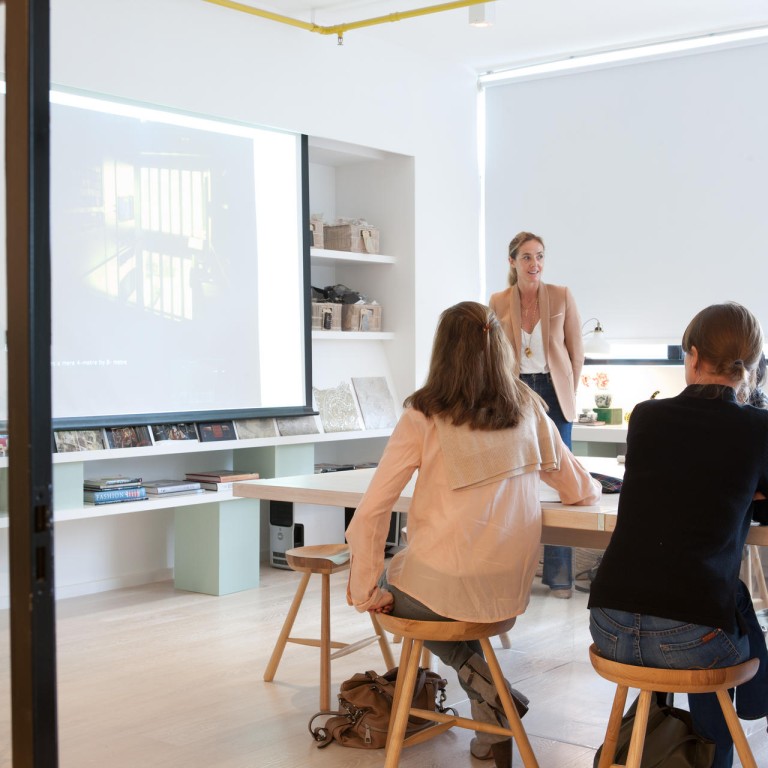
City designer says small home spaces can be turned into stylish spots
Eve Mercier is teaching students to combine creativity and practicality in the home with her interior workshop on creative compact design
Interior designer Eve Mercier is on a mission to transform the smallest of spaces at home into highly functional stylish spots.
"A well-designed small space is one that has been carefully thought out with a focus on the essentials along with a strong sense of style," says the Hong Kong-based designer, whose Insight School of Interior Design offers an intensive one day workshop on creative compact design.
Mercier, who worked in fashion and at Christie's before joining Candy & Candy's luxury residential and commercial interior design team, says the course teaches students to combine creativity and practicality.
"It seems obvious but the first step we teach is how to think about what the space will be used for and by whom," she says.
Two case studies offer real-life examples of how to think outside the box. The first, by local designer Gary Chang, illustrates how he changes his 344 square feet Hong Kong flat into 24 different "rooms" using an ingenious and highly flexible, yet stylish, series of sliding panels and concealed storage.
Custom-built features maximise every square inch, explains Mercier. "A good local contractor can make built-in or fold-away beds and desks as well as create extra space with inset niches for storage or display. Even a tight corner can be turned to advantage with customised seating."
Sliding doors like in Chang's home instantly add space in traditionally tiny spaces like bathrooms and kitchens, but good designers also ensure the handles are sturdy, says Mercier.
Mirrors or reflective surfaces like glass, Perspex or steel furniture also create the optical illusion of more space and light.
Mercier's second case study, a 969 sq ft mews pied-à-terre in London that she transformed for a family of five, shows how using the same colour palette and flooring significantly increases the sense of space.
"We teach students to think about how to develop a sense of light and space," says Mercier. "Raising furniture like a cabinet or shelves off the floor, or elongating the dimensions of seating, make a surprisingly big difference. Even using single planks of wood running the length of the floor keeps your eye moving."
Another trick is to invest in compact appliances by shops such as Japanese homeware chain Muji and to think creatively about storage. "Try to find hidden spaces like the area above doors, or store shoes under stairs or concealed within bench seating," Mercier suggests.
For interior designer Amy Spiegel, who took several of Mercier's design courses, this advice translated into a mobile shelving unit that doubles as a display unit and room divider. Her client's two daughters share a large open-plan bedroom so Spiegel asked each to pick a favourite colour and then used it as the accent colour on the shelves of each side of a large bookcase.
"Some of the shelves were enclosed, adding privacy. I added heavy duty castors so the girls could rearrange their room to create private spaces or an open communal area as needed."
Elsewhere, in a studio flat for a style-conscious male client, Spiegel played with perspective in a compact kitchen, adding a gunmetal grey-mirrored backsplash and black glass on the walls to reflect panoramic harbour views.
Space constraints often encourage creativity, Mercier says.
"It forces you to come up with innovative new ideas, like in the London case study where I replaced a traditional basin in a cloakroom with a champagne bucket," she says.
However, the designer is keen to stress the importance of technical know-how alongside creativity. "You have to know your dimensions to be able to think smarter."

